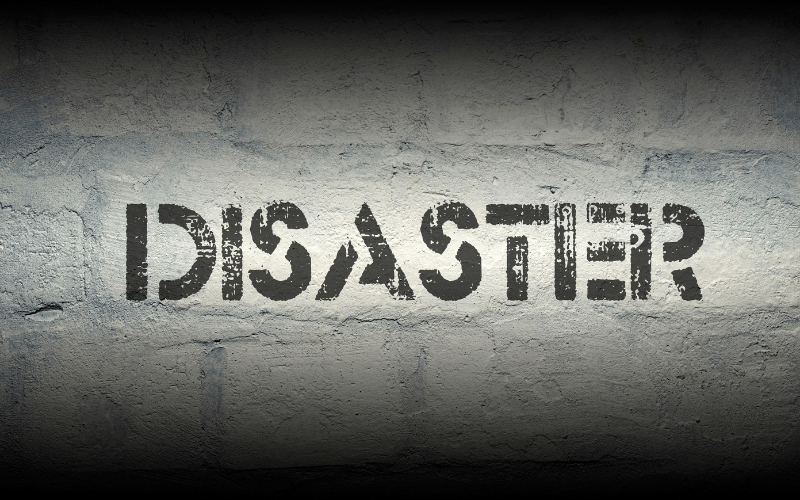November is Adoption Awareness Month, a time to raise awareness around adoption and the importance of lifelong family connections, including adoptive or foster care families. We asked Wendy Sue Horn, LCSW, and Ann Beckley-Forest, LCSW, to tell us more about EMDR therapy and adoption.
Becoming an Adoption Competent EMDR Therapist
Guest Blog Post by Wendy Sue Horn, LCSW and Ann Beckley-Forest, LCSW

Wendy Sue Horn, LCSW
We are convinced of the need for adoption-competent mental health services.

Ann Beckley-Forest, LCSW
Through this lens, we can fully address the lived experiences and deeper clinical realities of those whose family constellation includes adoption, foster care, or kinship care. As EMDR clinicians in the midst of this clinical work with families, as well as EMDR trainers, we embrace a robust commitment to adoption-competent EMDR therapy.
We know that strong case conceptualization, integrating AIP theory, attachment theory, and an understanding of structural dissociation in complex attachment-related trauma, is vital for comprehensive EMDR treatment planning. The seven core issues of adoption (Roszia and Maxon, 2019) and the main types of communication about adoption (Riley and Meeks, 2006) can be explicitly considered as another prong in foundational case conceptualization when working with those who have been separated from their biological families.
How does a child adapt to their caregivers when they know (either cognitively or in some felt somatic ways) that they have had these relationships severed or betrayed in the past? We are curious about how these losses of primary attachments are stored as a felt sense of threat in the body, what distressing images the child may have (or have constructed) as well as the common negatively held beliefs that spring from these circumstances. So many adoptees struggle across the lifespan with negative beliefs related to safety, identity and belonging. The incentive is strong to try and address these ruptures through reprocessing with EMDR.
Building competency around adoption
Adoption competent mental health principles assert that attachment disruptions at any point in childhood, including infancy, bring along with them issues of loss, rejection, shame, guilt, identity, intimacy, mastery, and control (Roszia and Maxon, 2019). Many adoptive families cling to beliefs that disruptions that happened early in life are not “remembered” by the child and thus not important. Twenty years of advances in neuroscience inform us that actually it is the opposite that is true, these early wounds are stored powerfully and somatically as implicit memories (Gentsch & Kuehn, 2022).
Riley and Meeks (2006) describe three main categories of communicative openness as a way to begin to understand and engage the adoptive family:
- blind (denying the adoptee’s unique needs),
- balanced (an open and curious stance), and
- blaming (over attributing challenges to the adoption history).
We see these variations a lot in the family systems of adopted children. For example, a 12-year-old wishes they could talk about their confusing feelings and questions about their birth mother, but their parent, convinced that “you are my true child”, avoids any mention of birth parents, leaving the child’s curiosity unspoken and unsupported. In contrast, a parent models wondering about the birth family, asks questions, and responds with openness and curiosity, making space for questions and feelings without judgment or fragility.
EMDR phase 1 considerations
In gathering history, we must seek information about adoption experiences for various members of the adoption and kinship family constellation. We see birth parents who are grieving the loss of a child, siblings who have been separated due to placement changes in foster care, the ambiguous grief for extended family members when a child has a placement change, and the adopted individuals themselves, many of whom have been dislocated from the geographical and cultural home of their first family.
Particularly for the adoptee, we see a type of adaptation known as masking that can increase how adopted clients – whether children or adults – may separate or dissociate themselves from their negative feelings, in an effort to prevent further attachment losses or to reconcile their need for connection with the stored experiences of being betrayed or having lost connections. When there are complex trauma experiences, including maltreatment compounding these primary losses, the dissociative strategies can lead to increasing fragmentation and more structural dissociation as the child grows towards adulthood. Often, it is the therapist who will need to broach these experiences as potential trauma targets in EMDR, as the client or family may be dismissive or “blind” to the uniqueness of the adoptee experience.
Children are developmentally quite egocentric and tend to blame themselves for adversity. In terms of our EMDR therapy treatment planning and assessment of particular target memories, the themes of responsibility are common with negative cognitions such as “I am not good enough or worthy of love.” In families that have a blind communicative style to adoption (parents who do not acknowledge the impact), these children have no space to express their feelings and thoughts about their experience. Children learn that it isn’t safe to have distress or questions about belonging or identity. Many don’t know what it is they are feeling, which can become its own type of emotional neglect. In the absence of attuned adults, kids need help to understand the complexities of the loss, rejection, shame and guilt, identity confusion, intimacy and mastery and control issues they face. If unattended, these children may hold these emotions in, turn away from support, cope in maladaptive ways, and structurally dissociate from the parts of themselves that hold this distress.
Cultural considerations for working with adoptees
An additional layer of complexity is added in transracial and transcultural adoption, and clinicians must include this awareness in case conceptualization. An example of the kinds of possible targets could include microaggressions, which range from a classmate asking, “Why don’t you look like your parents?” to more complex issues related to how the adoptive parents respond to race-based teasing and assumptions people make about their child based on looks and themes of internalized racism. Efforts by the parents to smooth over these experiences without processing them can accumulate as invalidation and rupture the attachment relationship. In the current political climate, with the targeting of non-white immigrant communities, many international adoptees and children of color are presenting clinically with an increase in fear attached to these episodes, even if experienced only vicariously through the media.
EMDR interventions that help adoptees
All of the tools we use to make EMDR reprocessing available in childhood are relevant for adopted children. We use playful and creative techniques, storytelling, playful “parts work”, and especially interweaves from the attachment figures, which are neither blind nor blaming, to heal these wounds, preferably while still in childhood, and able to accept this support from caregivers. In adolescence and extending into adulthood, our ability to frame and broach these targets with older adoptees gives them validation, strengthens their sense of self, and allows for access to more vividly felt emotions and body sensations as they venture into adult attachment relationships.
By being adoption competent EMDR therapists, we can ask the right questions, make sense of the current triggers and their origins, prioritize healing and integrating these important experiences, and install helpful resources which will ultimately bolster resilience and provide relief.
Wendy Sue Horn, LCSW, EMDRIA Approved Consultant™ and Trainer at EMDR Resource Center, facilitates a postgraduate certification program in adoption-competent mental health services through the Center for Adoption Support and Education (C.A.S.E.). She partners with Oregon Child Welfare Services to expand EMDR services to foster youth.
Ann Beckley-Forest, LCSW, RPT-S is an EMDRIA Approved Consultant™ and Trainer at Playful EMDR in Buffalo, New York specializing in child trauma and dissociation and providing trainings and consultation around the world. She is also co-editor of EMDR with Children in the Play Therapy Room and a proud adoptive parent.
References
Gentsch, A., & Kuehn, E. (2022). Clinical manifestations of body memories: The impact of past bodily experiences on mental health. Brain Sciences, 12(5): 594. https://doi.org/10.3390/brainsci12050594
Riley, D., & Meeks, J. (2006). Beneath the mask: Understanding adopted teens. C.A.S.E. Publications.
Riley, D., & Meeks, J. (2006). Communication in adoptive families. Guilford Press.
Roszia, S. K., & Maxon, A. D. (2019). Seven core issues in adoption and permanency: A comprehensive guide to promoting understanding and healing in adoption, foster care, kinship families and third party reproduction. Jessica Kingsley Publishers.
Back to Focal Point Blog Homepage
Additional Resources
If you are a therapist interested in the EMDR training:
- Learn more about EMDR therapy at the EMDRIA Library
- Learn more about EMDR Training
- Search for an EMDR Training Provider
- Check out our EMDR Training FAQ
If you are EMDR trained:
- Check out the EMDRIA Let’s Talk EMDR Podcast
- Check out the EMDRIA Focal Point Blog
- Learn more about EMDRIA membership
- Search for EMDR Continuing Education opportunities
If you are an EMDRIA™ Member:
- Learn more about EMDR Consultation
- Find clinical practice articles in the EMDRIA Go With That Magazine®
- Search for articles in Journal of EMDR Practice and Research in the EMDRIA Library
Date
November 14, 2025
Contributor(s)
Wendy Sue Horn, Ann Beckley-Forest
Topics
Attachment, Childhood Trauma
Client Population
Adolescents, Children





